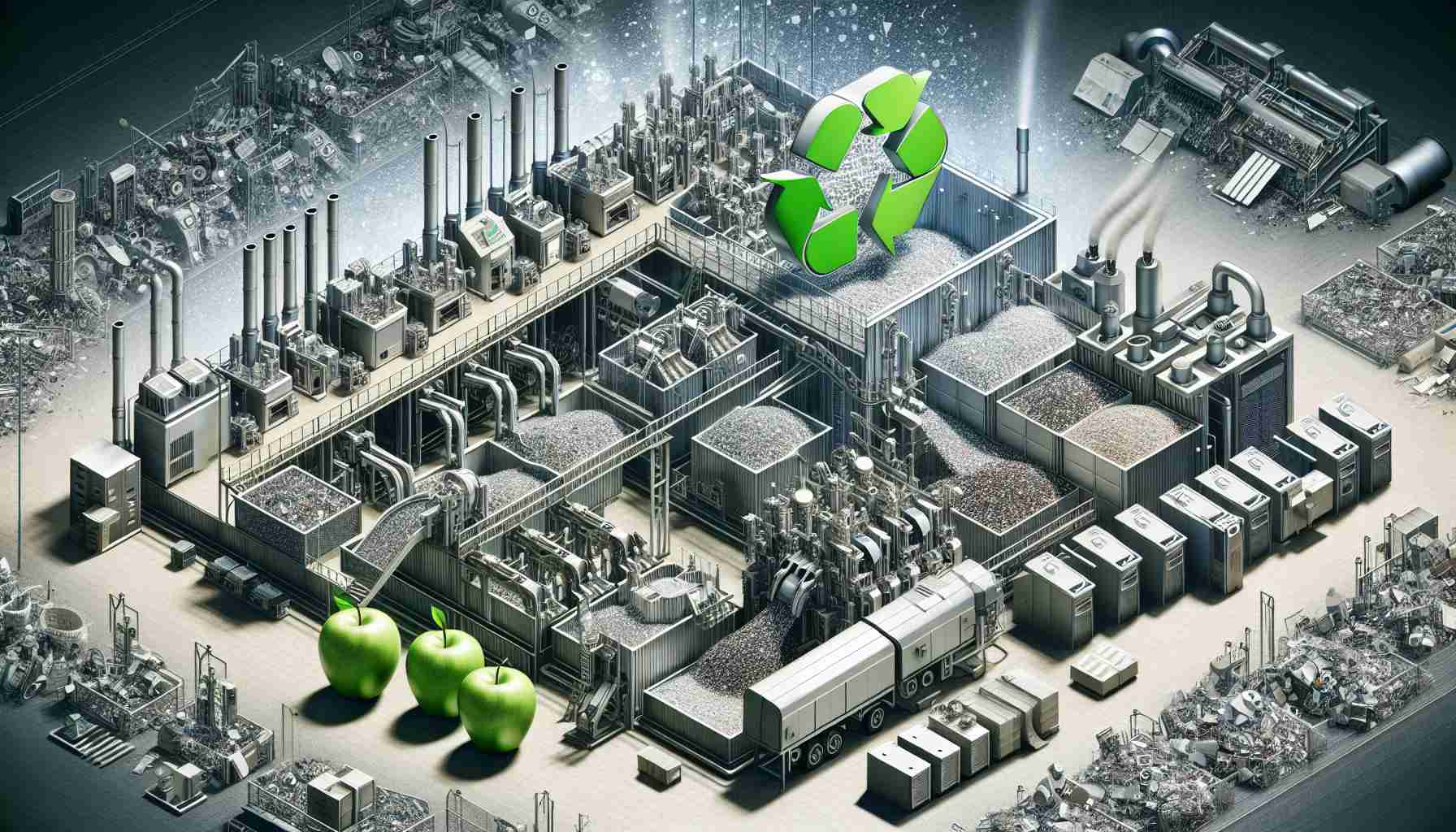As global concerns about environmental sustainability continue to grow, tech titan Apple has made a public pledge towards a greener future by announcing its commitment to become carbon neutral across its full business operation and manufacturing supply chain by 2030. Building on this promise, the company boasts a substantial reduction in its greenhouse gas emissions, with more than a 55 percent decrease since 2015.
Recycling Innovations and Rehoming Devices
Apple’s sustainability activities reach beyond just slashing emissions. Over the past year, an impressive figure of 12.8 million Apple products and accessories have been reused, thanks to initiatives such as AppleCare and the Apple Trade-In program, which encourages customers to exchange outdated devices for newer models or store credit.
Apple’s Robotic Revolution in Recycling
Determined to revolutionize electronics recycling, Apple introduced a sophisticated robot named Daisy in 2018, capable of dismantling 29 iPhone models into core components for recycling. Complementing Daisy are two machines, Dave and Taz, operational in China, driving forward the tech giant’s recycling efforts.
Moreover, Apple’s asset recovery facility in California recently embraced a new sorter designed to optimize recycling efficacy. The Californian establishment has also deployed autonomous robots to handle logistics and is exploring collaborations with leading educational institutions like Carnegie Mellon University to delve into advanced technologies like artificial intelligence to further enhance the recycling process.
Apple continues to incentivize customers to trade in older models, like the iPhone 7, ensuring that even these aged devices can contribute to the creation of new products. The company is firm on its stance to recycle products that have exhausted their lifecycle in a responsible manner, retrieving components that can be repurposed.
Challenges in Apple’s Recycling Efforts
Despite its progress, Apple’s recycling program faces its own set of challenges, including instances of device theft and unnecessary destruction. In 2020, Apple took legal action against a recycling partner following the disappearance of a considerable quantity of devices. Further, reports have surfaced indicating that a substantial number of devices intended for recycling were instead marked for destruction when they could have been refurbished, suggesting that while Apple is making strides in its environmental initiatives, there is still room for improvement in ensuring its recycling practices are as efficient and ethical as possible.
Advantages of Apple’s Recycling Technologies:
1. Reducing resource extraction: By recycling materials, Apple decreases its reliance on mining and the extraction of new resources, thus conserving natural habitats and reducing environmental impact.
2. Minimizing waste: Apple’s recycling program helps to reduce the amount of electronic waste that ends up in landfills, which is crucial given that e-waste is one of the fastest-growing waste streams globally.
3. Energy conservation: Recycling materials often requires less energy than producing new ones from raw resources, leading to a reduction in Apple’s overall energy consumption and carbon footprint.
4. Innovation leadership: Advanced recycling technologies like Daisy, Dave, and Taz can position Apple as a leader in sustainable practices in the tech industry, potentially influencing other companies to follow suit.
Key Challenges and Controversies:
– Ethical recycling: Ensuring that the process for recycling Apple products is not only efficient but also minimizes unnecessary destruction of usable components is an ongoing challenge.
– Legal issues and theft: Apple’s lawsuit against a recycling partner for the theft of devices underscores the need for vigilant monitoring and enforcement of recycling standards and partnerships.
– Balance of refurbishing vs. recycling: There is an ongoing conversation about the balance between what products can be refurbished and reused versus recycled, and how Apple determines the end of a product’s life cycle.
Disadvantages of Apple’s Recycling Technologies:
1. Equipment Cost: Developing and maintaining advanced recycling robots like Daisy can be expensive, potentially affecting the cost efficiency of the recycling process.
2. R&D investment: The constant need for research and development to improve recycling technology can be costly and faces the challenge of ensuring that investments lead to tangible sustainability outcomes.
3. Limited reach: Currently, these advanced recycling technologies may not be available or economically feasible in all regions where Apple products are sold, potentially limiting the scope of recycling efforts.
To stay informed about Apple’s sustainability initiatives and progress, you can visit the company’s main website where they regularly update their environmental policies and achievements: Apple.
In all, while Apple faces certain challenges in further refining its recycling programs and ensuring ethical practices, its commitment to advanced recycling technology and carbon neutrality represents a significant step forward in the industry’s movement towards greater sustainability.
The source of the article is from the blog smartphonemagazine.nl
